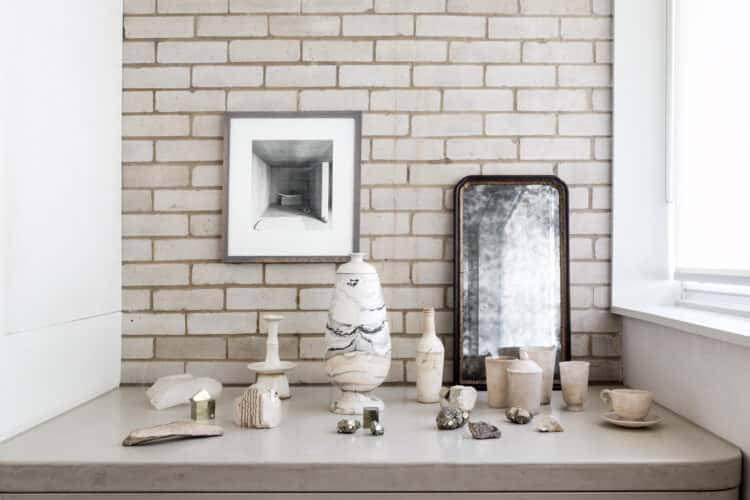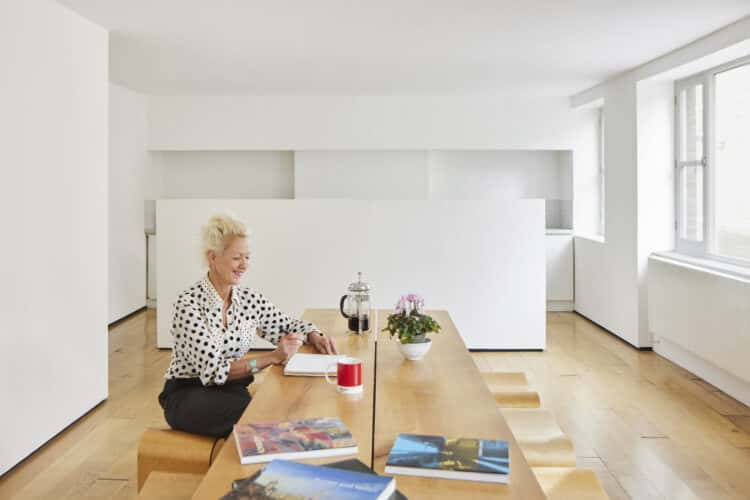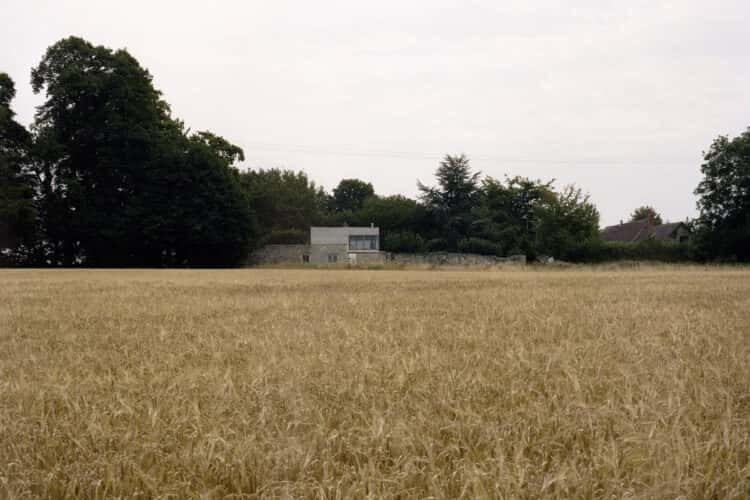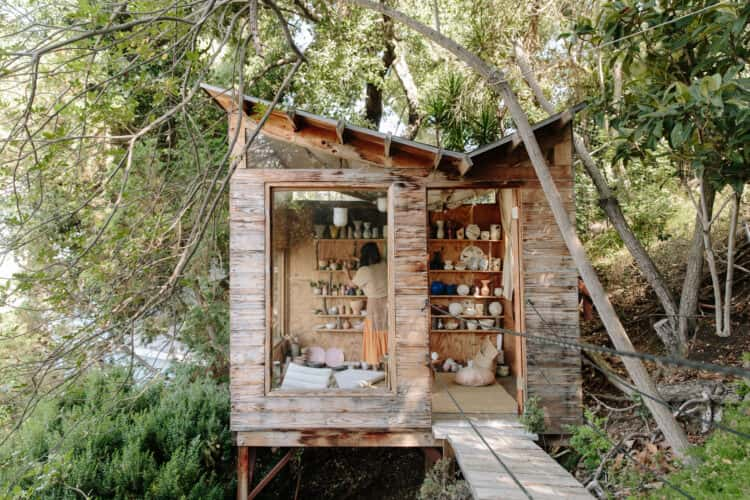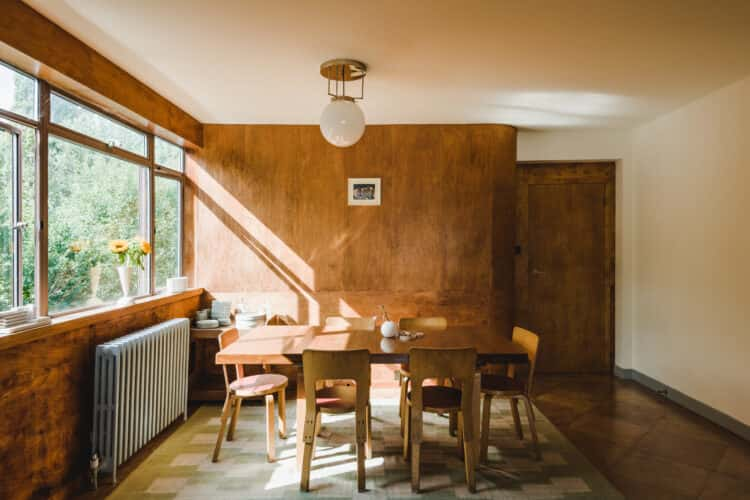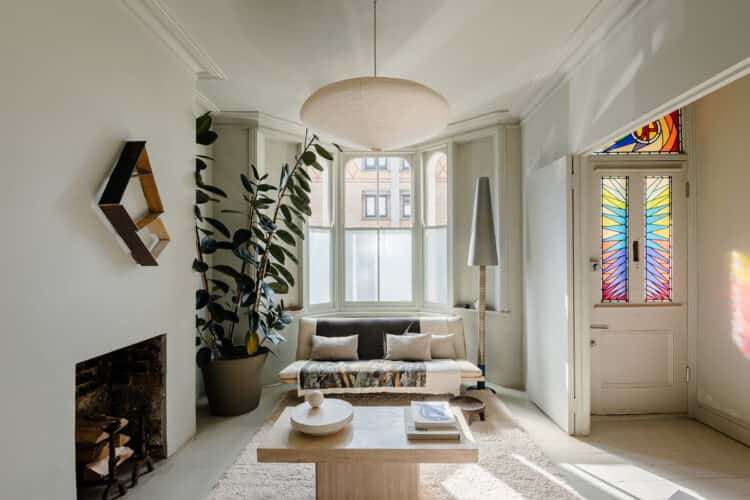A Modern Way to Live: our co-founder Matt Gibberd on decoration
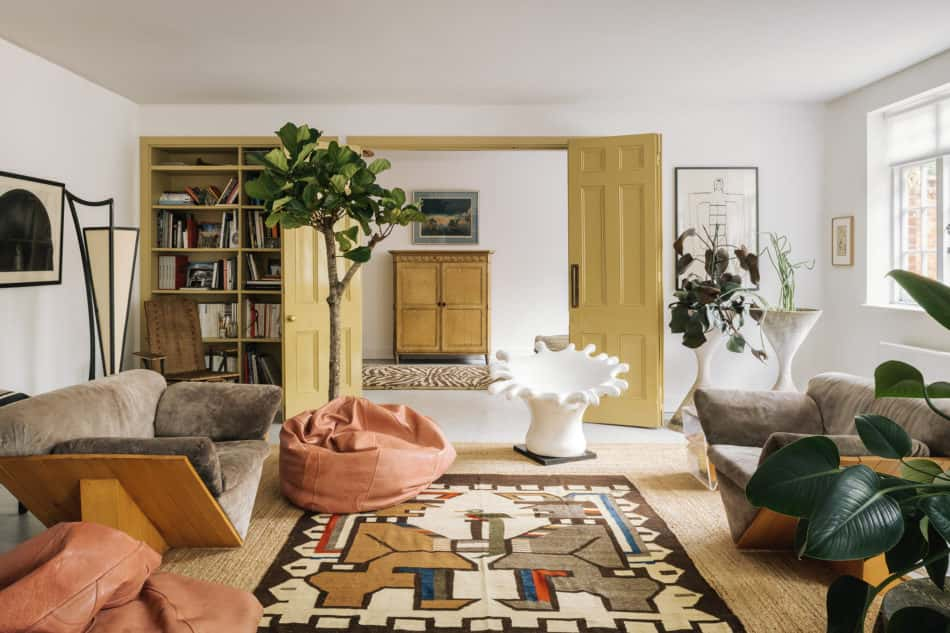
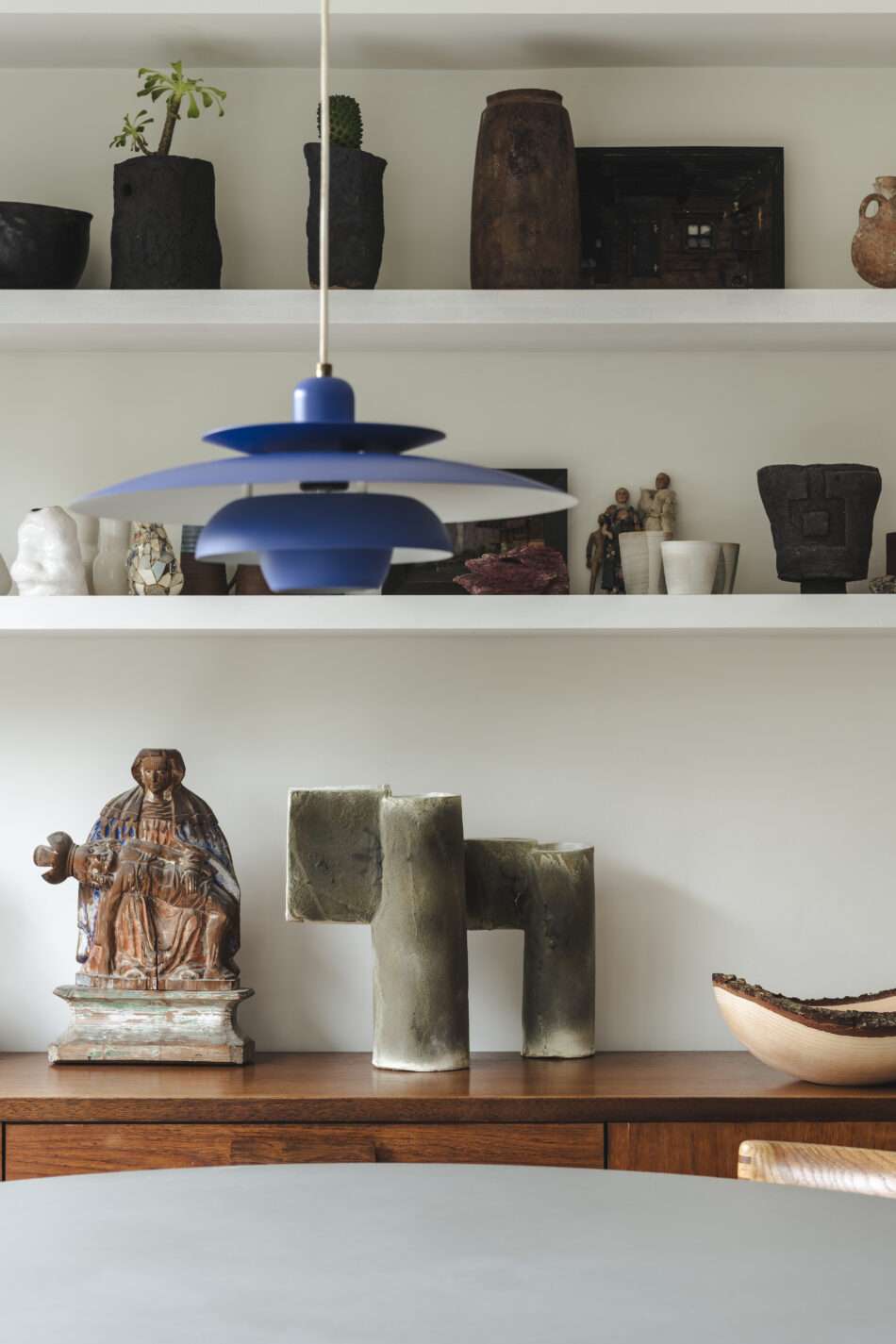
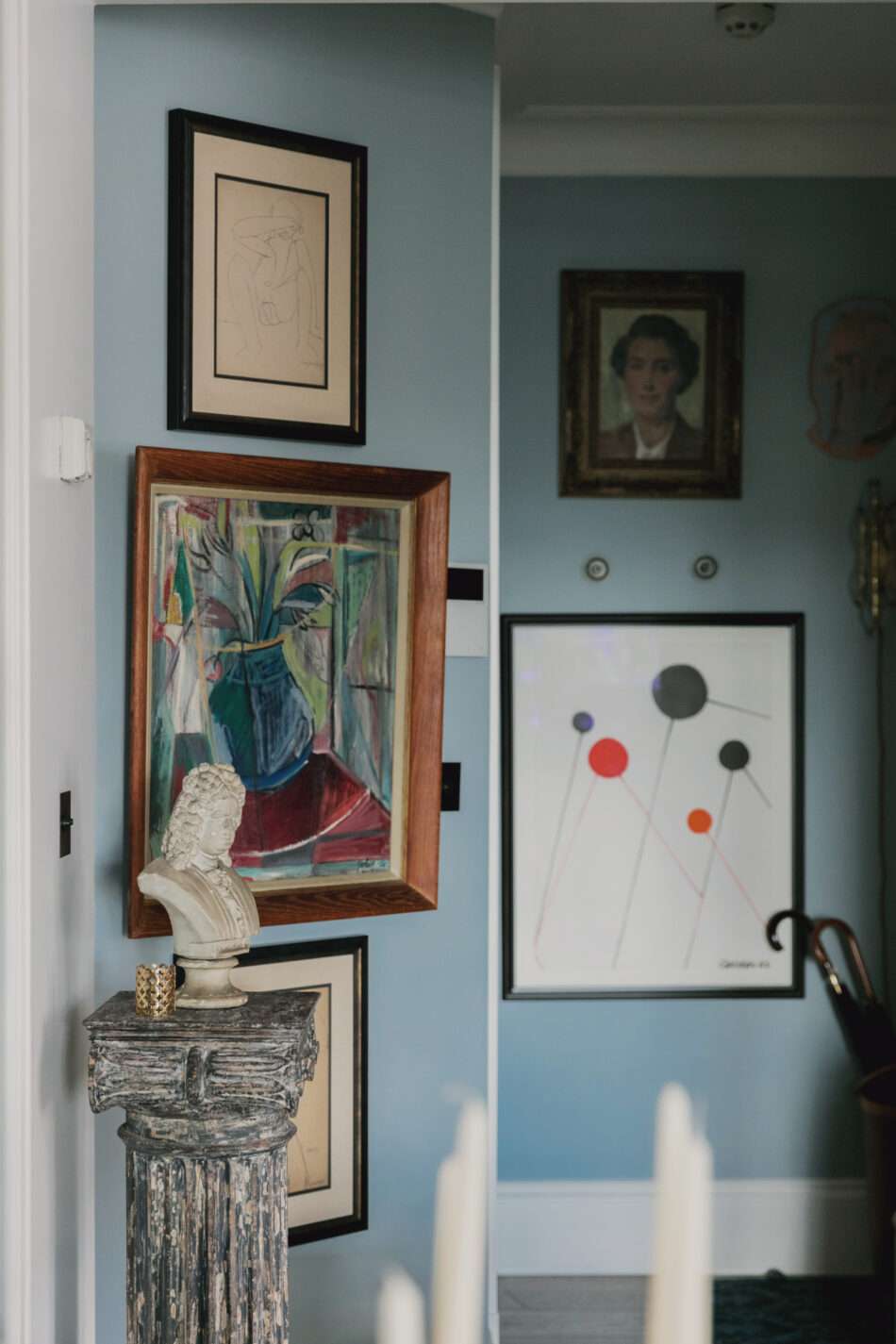
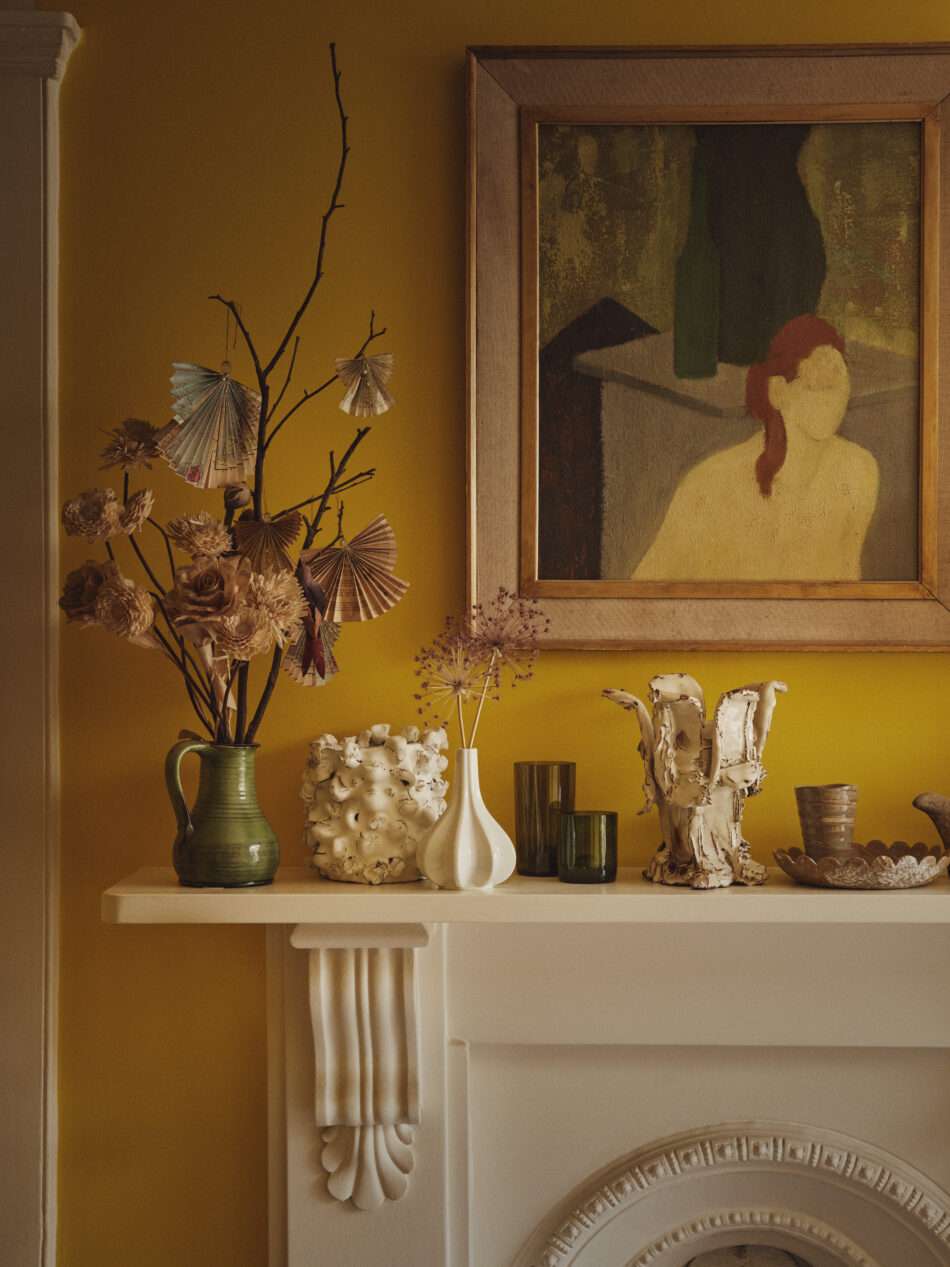
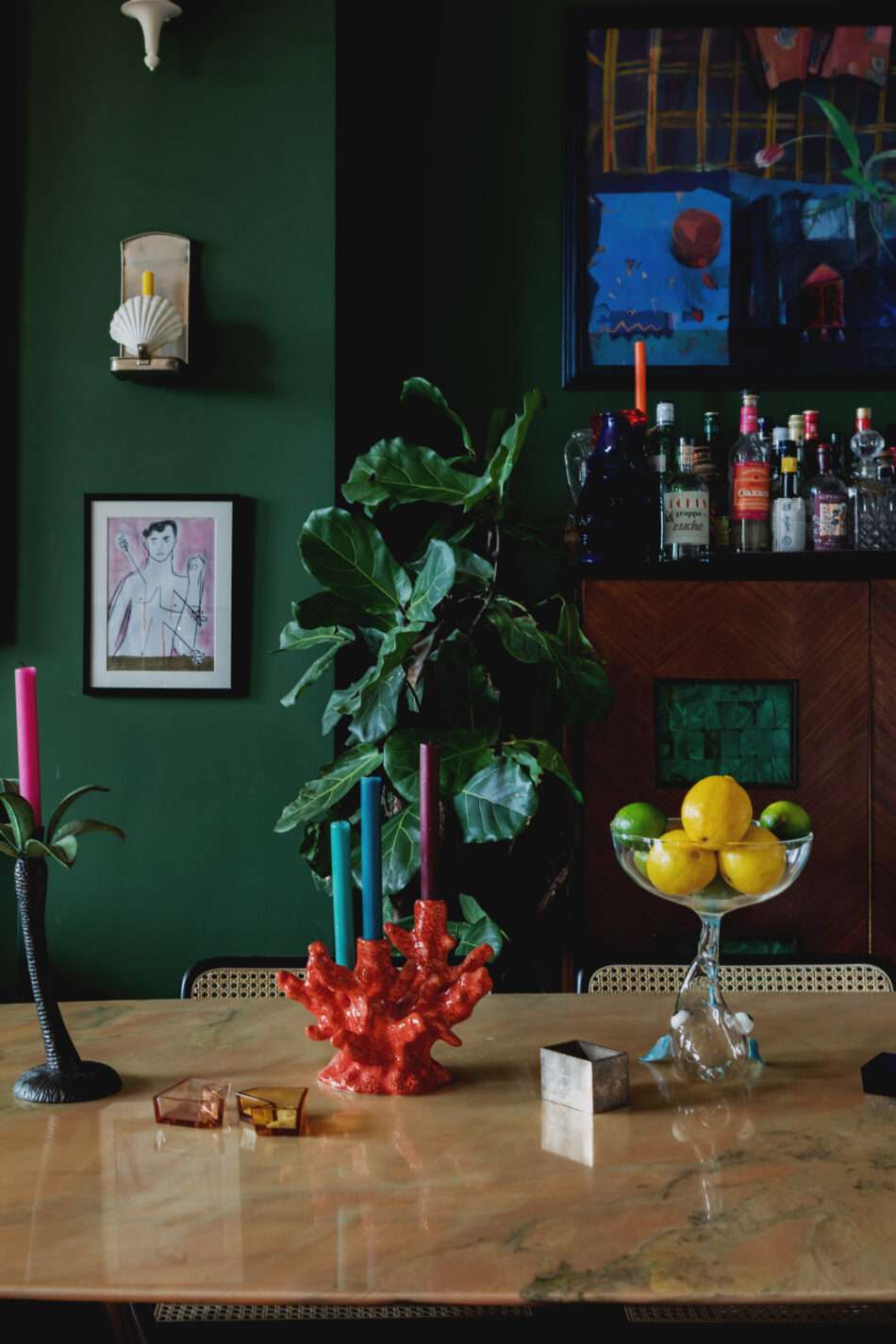
Space, light, materials, nature and decoration: the five design principles our co-founder Matt Gibberd explores in his book, A Modern Way to Live. Matt is giving us a preview into each of the title’s chapters in this dedicated series. Here, in its final part, he shares his thoughts on decoration – touching on our ever-changing tastes, the authenticity of reflecting character and the interiors of his own home.
If you were to visit my house for a cup of tea and a Jaffa Cake, you’d be forgiven for thinking that the children had been let loose in the entrance hall with a box of charcoal sticks. The walls are emblazoned with wobbly trees, shrubs and a loosely defined expanse of sky, all in assorted shades of grey and black. However, closer inspection reveals that this naïve rendering of the English countryside is in fact a wallpaper – a sketch by my wife, Faye Toogood, that has been blown up onto full-height hessian panels by the Brooklyn-based company Calico.
Things are no less fantastical in the adjacent dining room. The walls have been sprayed with layer upon layer of gloss paint, in a bespoke ochre colour that Faye developed with Farrow & Ball, called ‘Toogood Earth’. When the candles are lit and a fire is burning in the hearth, it feels like being inside a cave as the embers of the day flicker on the horizon.
We have used all sorts of traditional decorative elements throughout our Victorian manor house, such as antique oriental rugs, glazed timber screens by Plain English, roll-top baths and beautifully faded floral fabrics from Colefax & Fowler. These are combined with artworks by modern artists we admire like Ben Nicholson, Roger Hilton and Patrick Procktor, alongside the occasional seascape by my father. Chairs by Gio Ponti and Marcel Breuer jostle for space with Regency library chairs and high-back Windsors. The American decorator Nancy Lancaster once described interior design as “a bit like mixing salad”, and I couldn’t agree more. Combining pieces from different eras and different countries makes for a far more enlivening result.
Any interior should represent the personalities of the people who occupy it, rather than being some sort of ersatz appropriation. These days, we are bombarded with seductive images of houses on Instagram feeds and Pinterest boards, and it is tempting to copy them. We can all get hung up on the idea of buying the latest thing that everyone else seems to have. The issue with this decoration-by-numbers approach is that, aside from being disingenuous, it feels like something that is intended to appeal to the visitor rather than the person who lives there.
In the brilliantly sprawling architectural manifesto A Pattern Language, the authors write: “The things around you should be the things which mean most to you, which have the power to play a part in the continuous process of self-transformation, which is your life. That much is clear. But this function has been eroded, gradually, in modern times because people have begun to look outward, to others, and over their shoulders, at the people who are coming to visit them, and have replaced their natural instinctive decorations with the things which they believe will please and impress their visitors.”
Fashions change, and so do our tastes, so it is best to surround ourselves with the objects that have a sense of timelessness and mean the most to us emotionally. When my father died, the things that my brother and I chose to inherit were those with the most personal memories: the pictures he painted; his box of fishing flies; our grandfather’s cigarette case, which was gifted to him by the Architectural Association when he was the principal in the 1940s. The choices we made bore no relation to size, function or monetary value. Most of the bigger pieces of furniture were sold in a garage sale or given away to family and friends.
In his brilliant book The Beauty of Everyday Things, Yanagi Sōetsu, founder of the mingei (folk art) movement in Japan in the late 1920s, urges us to trust our own instincts. As he explains, many of the best objects have a kind of accidental beauty that is the result of fulfilling utilitarian needs. They have not been designed by well-known creators, cannot be found in textbooks and do not cost a great deal. The other day, Faye came home with a fibreglass sheep salvaged from a butcher’s shop, its head far too small for its bulbous body. “It reminds me of those naive nineteenth-century trophy paintings,” she explained, as our daughters eyed it suspiciously.
It is important to decorate with a sense of context. Our house was built using an early form of in-situ concrete, with muscular proportions and an absence of mouldings or anything flouncy. We wanted to acknowledge its Englishness and its countryside setting, but also felt it needed prettifying a bit, which is why we plumped for warm colours, patterned wallpapers and millefeuilles of textiles. Our previous place was a rectilinear modernist house in Highgate built by the architect Walter Segal, and anything colourful looked strangely out of place, so we ended up with a simple interior scheme of white walls and natural timber. Before that, we had a little Georgian townhouse in Islington, where a Vermeer-inspired palette of inky blues and aubergines brought out the dignity of the architecture.
Eileen Gray’s ‘Villa E-1027’ on the Côte d’Azur is one of the most contextual houses I have visited. Railings, sailcloth, expanses of sun-kissed stucco and a flagpole on the roof deck give the impression of an ocean liner, while the blue and white interior is an elegant expression of the maritime style. We took The Modern House team on a trip to see it a few years ago, and we came away feeling like we had got to know Eileen, her sensibility and supreme sense of wit. The custom-made furnishings flex and tilt in a ballet of mechanics. The ingenious ‘Satellite’ mirror, for example, has a secondary magnifier on an adjustable arm that allows the user to shave the back of their neck (or lament their bald patch, as the case may be). At the rear of the dining alcove is a folding table which, when opened, transforms the corridor into a bar.
Indeed, the most interesting interiors are those which are unmistakably imbued with the character of their creator. A home should be eclectic, singular, and potentially even a bit odd. The great curse of modern decorating is the ubiquitous ‘hotel style’, a bogus and buttoned-up attempt at glamour using lamps with mirrored bases and clocks pretending to be from a Parisian brocante. Sometimes I daydream about rounding up all of the Union Jack cushions in the world and lobbing them on a bonfire when no one is looking.
